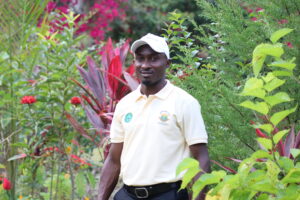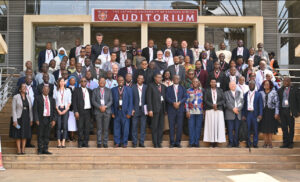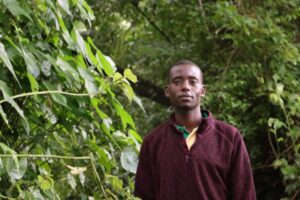Intrested Email us at laudatoyouthinitiative@gmail.com
TOPIC: Laudato Youth Initiative: “Enhancing Research on Community Conservation of Forests in Uganda”
1. Introduction
Uganda’s forests are among the most biologically diverse in East Africa, playing a crucial role in climate regulation, watershed protection, biodiversity conservation, and rural livelihoods. However, the country continues to face one of the highest deforestation rates in the region, losing an estimated 2.4% of its forest cover annually (National Forestry Authority [NFA], 2020). These losses are driven by agricultural expansion, charcoal production, population pressure, and weak forest governance systems.
In response to these challenges, community-based forest management (CBFM) has emerged as a key strategy for conservation and sustainable use of forest ecosystems. Evidence from Uganda and other countries suggests that when communities are empowered, educated, and involved in decision-making, forest outcomes improve significantly (Banana et al., 2019).
The Laudato Youth Initiative, inspired by Pope Francis’ call to ecological citizenship and integral ecology in Laudato si’ (Pope Francis, 2015), seeks to contribute to sustainable forest protection by strengthening research, advocacy, and youth engagement in community conservation across Uganda.
This research project aims to assess, document, and enhance community-led forest conservation practices in Uganda, promoting ecological stewardship that integrates environmental, social, and spiritual dimensions.
2. Problem Statement
Despite the existence of national forest policies and programs encouraging local participation, many community conservation initiatives in Uganda lack adequate research support, technical capacity, youth involvement, and long-term funding. Local communities often possess indigenous ecological knowledge, yet this knowledge remains undocumented and underutilized in formal forest governance structures (Namaalwa, 2016). Furthermore, youth, who represent the largest demographic group remain underrepresented in conservation efforts, despite their potential to drive innovative and sustainable solutions.
There is therefore a critical need for research that strengthens youth-led engagement, documents community conservation practices, and generates evidence to inform policy and community action.
3. Research Aim
To investigate and strengthen community-based forest conservation practices in Uganda by enhancing youth-led research, documenting local conservation models, and providing evidence-based recommendations for sustainable forest management.
4. Research Objectives
1. To assess the current state of community forest conservation initiatives in selected regions of Uganda.
2. To document local and indigenous knowledge systems used in forest stewardship.
3. To analyze the role of young people in community-driven conservation efforts.
4. To identify challenges and opportunities for strengthening community–youth collaboration in forest management.
5. To develop evidence-based strategies for enhancing community conservation through the Laudato Youth Initiative.
5. Research Questions
1. What forms of community-based forest conservation exist in Uganda, and how effective are they?
2. What indigenous knowledge and local practices contribute to forest protection?
3. How are youth currently participating in community conservation, and what barriers limit their involvement?
4. What socio-economic, cultural, and institutional factors affect community forest conservation?
5. How can the Laudato Youth Initiative strengthen community–youth partnerships in forest management?
6. Theoretical Framework
The study will be grounded in two frameworks:
a) Integral Ecology (Laudato si’)
Integral ecology emphasizes the interconnectedness of environmental, social, economic, and spiritual systems (Pope Francis, 2015). This framework supports a holistic understanding of conservation that includes human dignity, community participation, and environmental justice.
b) Community-Based Natural Resource Management (CBNRM)
CBNRM theory posits that local communities are more successful in managing natural resources when given secure rights, incentives, and supportive institutions (Ostrom, 1990). This approach aligns with Uganda’s decentralized forest governance model.
7. Methodology
7.1 Research Design
This study will employ a mixed-methods approach, combining qualitative and quantitative techniques.
7.2 Study Sites
Research will be conducted in selected forest-dependent communities around:
• Mabira Forest Reserve
• Kibale Forest
• Karangura Community Forests
• Mount Rwenzori community buffer zones
These sites were chosen due to active community conservation initiatives and ongoing deforestation pressures.
7.3 Data Collection Methods
1. Household Surveys
• Assess community perceptions, conservation activities, and socio-economic factors.
2. Key Informant Interviews
• Local leaders, forestry officers, youth leaders, NGOs, and cultural elders.
3. Focus Group Discussions
• Separate groups for youth, women, and community conservation groups.
4. Participatory Rural Appraisal (PRA)
• Mapping forest use, seasonal calendars, and local conservation strategies.
5. Document Review
• Existing policies, reports, and research on forest management.
7.4 Data Analysis
• Quantitative data will be analyzed using descriptive and inferential statistics.
• Qualitative data will be coded thematically.
• The findings will be interpreted within the frameworks of integral ecology and CBNRM.
8. Expected Outcomes
1. A detailed assessment of community-led forest conservation across multiple districts in Uganda.
2. A documented catalog of indigenous ecological knowledge and local practices.
3. A clear understanding of youth involvement, barriers, and potential roles in conservation.
4. Evidence-based recommendations for integrating youth leadership into community forest management.
5. A strengthened research foundation for the Laudato Youth Initiative to develop programs, advocacy, and training.
9. Significance of the Study
This project will:
• Support Uganda’s efforts to meet national and international climate and conservation goals.
• Promote youth empowerment and ecological citizenship, echoing Laudato si’’s call to “care for our common home” (Pope Francis, 2015).
• Enhance collaboration between communities, local governments, faith-based organizations, and conservation actors.
• Generate actionable insights for improving community conservation and forest governance.
10. Ethical Considerations
The study will respect community rights, obtain informed consent, protect confidentiality, and ensure findings are shared in accessible formats with participating communities.
References
Banana, A. Y., Buyinza, M., & Luoga, E. (2019). Public and private roles in forest management in Uganda. International Forestry Review, 21(4), 487–501.
National Forestry Authority (NFA). (2020). State of Uganda’s Forests. Kampala: NFA.
Namaalwa, J. (2016). Integrating local knowledge in forest management in Uganda. Journal of Sustainable Forestry, 35(5), 391–408.
Ostrom, E. (1990). Governing the Commons: The Evolution of Institutions for Collective Action. Cambridge University Press.
Pope Francis. (2015). Laudato si’: On Care for Our Common Home. Vatican City: Libreria Editrice Vaticana.
United Nations Environment Programme (UNEP). (2021). Forest ecosystems in East Africa. Nairobi: UNEP.
Intrested in funding or partnering with us in this research Email us at laudatoyouthinitiative@gmail.com













